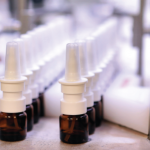Not all neutrophils are created equal, and they also have more than one route to cell death, Dr. Kaplan said. Enter NETs, an interconnected group of extracellular neutrophil fibers that bind themselves to pathogens and release DNA that promotes inflammatory responses in lupus.
Research indicates that NETs are strong inducers of type 1 interferons, which amplify vascular damage and may play a role in the development of vascular‑related lesions seen in lupus, Dr. Kaplan said. Other studies indicate that NETs may be a strong activator to NLRP3 inflammasome machinery in macrophages, she said.
In concluding her talk, Dr. Kaplan proposed that aberrant neutrophils play prominent roles in lupus through the modification and externalization of antigens that amplify the body’s immune response.
Interferon in Lupus

Dr. Elkon
The discussion of lupus continued with Keith Elkon, MD, head of the rheumatology division at University of Washington School of Medicine, Seattle. He began by noting that interferon is thought to be very important in lupus, and in many patients there is a striking signature of interferon in the skin.
Dr. Elkon reviewed ongoing research on skin-related disease flares in lupus that are triggered by sunlight, and he shared results from an unpublished study on mice exposed to ultraviolet (UV) light. The study took a systematic approach to expose normal mice to UVB light every day at around the same time for five consecutive days.
Rather than taking an animal and exposing it to a high dose of UV light and seeing what is stimulated, the researchers wanted to “make it more similar to what goes on for a human walking around in the sunlight,” Dr. Elkon explained. Skin changes, such as rashes and lesions, are an important part of lupus diagnosis criteria.
Researchers observed changes at each time point, conducted biopsies to analyze cell infiltrates and looked at reduced cytokines and activated pathways. Results showing a modest induction of type 1 interferon led them to further test interferon-receptor knock-out mice to see what would happen when interferon stimulation is blocked.
“To our surprise, instead of making this disease better, it actually made it worse,” Dr. Elkon said.
There was increased inflammation and increased redness in skin lesions. There was also an increase in inflammatory cytokines, TNF IL-6 and IL-1.
“So if you take away interferon, you actually get an increase in the inflammatory response,” Dr. Elkon said. “So that of course tells us that type 1 interferon in these animals may actually suppress inflammation.”



